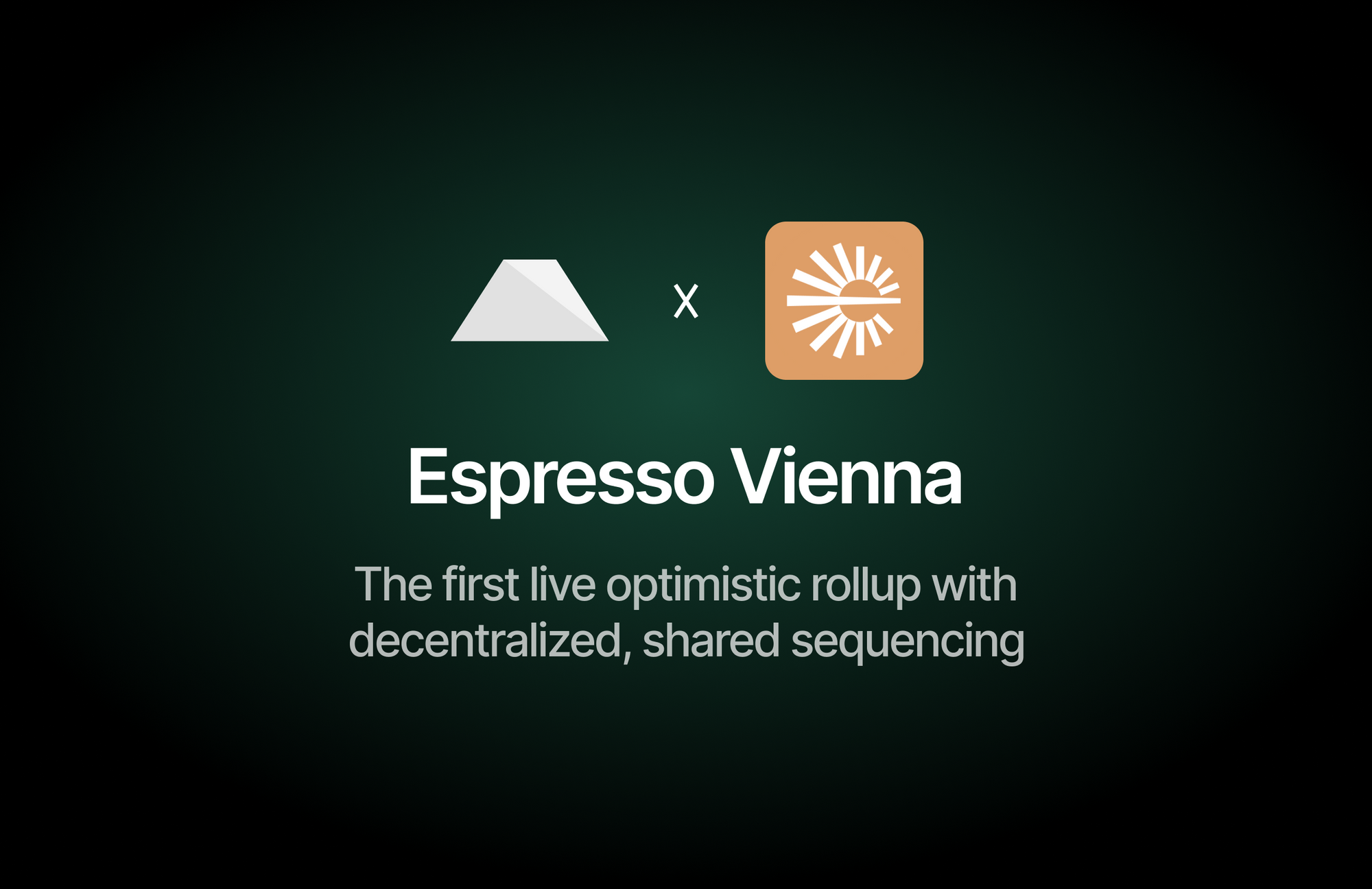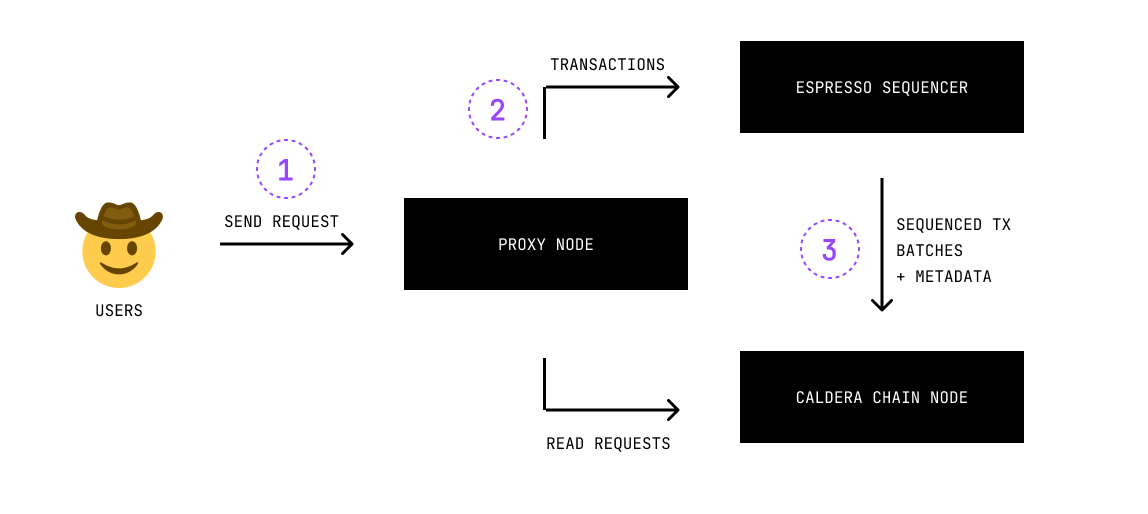Caldera and Espresso Systems unveil Vienna: the first Optimistic Rollup using Espresso's Decentralized Sequencer

We're excited to share the next update in our collaboration with Espresso Systems to bring Espresso's decentralized sequencer to the OP Stack: The public Vienna devnet!
The launch of this devnet represents the first time that developers and users alike will be able to interact with a live Optimistic Rollup using a decentralized sequencer network.
Why Decentralized Sequencing?
Every rollup relies on a sequencer to order and verify the transactions on the chain. Traditionally, these sequencers have been centralized entities, controlled by a single party or group of parties. The vast majority of rollups currently in production (including Arbitrum One, Optimism mainnet, Base, and zkSync, among others) currently utilize a centralized sequencer.
These rollups are still able to inherit the security properties of their underlying chain via rollup proof systems, but their centralized sequencers still pose several problems:
- Centralized sequencers create a single point of failure in the system. If the sequencer goes down, it can become impossible or prohibitively expensive to submit transactions for inclusion
- The centralized sequencer can arbitrarily censor or delay transactions, or reorder transactions to extract MEV
- Users do not have visibility into how transactions are ordered
In short: the status quo requires users to place some trust in rollup operators: users must trust that the operator will keep the sequencer online, trust that the sequencer orders transactions according to spec, and trust that the operator is not extracting MEV from the chain or otherwise acting in an underhanded way.
At Caldera, we have always committed to acting honestly and fairly. Integrating with Espresso is the next step: now, users can trust in the security and integrity of the sequencer network itself. By using a decentralized sequencer, the power to order transactions is no longer held by a single entity, but rather by the network as a whole.
How it Works
At a high level, the Espresso Sequencer network replaces the rollup's mempool implementation. User transactions are sent to the Espresso Sequencer rather than the rollup node itself. Then, rollup nodes query sequenced transactions from Espresso's sequencer node.
Here's a quick diagram:

- User requests are sent to a proxy service
- The proxy service routes the request depending on its type. Read requests are forwarded to the node directly. Transactions are instead sent to the Espresso Sequencer, which eventually orders them into blocks
- These blocks are pulled into the rollup node, which executes the transaction
If you're familiar with the internals of the OP stack and/or want a more technical deep dive, consult Espresso's documentation for a more in-depth explanation.
Espresso and Caldera
Ever since we began working with the Espresso Systems team back in July, we've been impressed with their commitment to decentralization and user security. The Espresso team has been a joy to work with, and we enjoy collaborating with them to tackle the challenges of bringing shared, decentralized sequencing to the rollup stacks we operate.
At Caldera, we're committed to offering the best solutions to builders in our ecosystem -- that involves collaborating with the best teams across the modular stack. By building with Caldera, teams can be confident that they will always be the first to access best-in-class blockchain infrastructure.
Get Started
The testnet is live! Get started by heading to the hub page at: https://vienna.caldera.dev/
This link contains documentation, a block explorer, a faucet, and instructions for adding the chain to metamask.
And if you're interested in launching an Espresso-powered chain for your ecosystem, don't hesitate to reach out.

